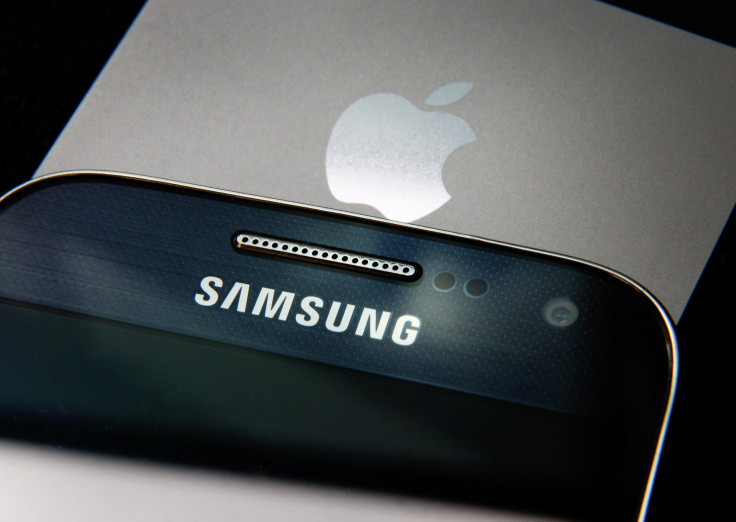Did Samsung Copy Apple? The Supreme Court Patent Infringement Case Explained

Apple and Samsung, the two gadget makers who represented more than a third of the smartphone market as of the second quarter of FY 2016, have been locked in patent battles since the spring of 2011. The Supreme Court will decide, starting Tuesday whether Samsung Electronics copied a patent design component of the iPhone—and, by extension, whether Samsung will pay Apple all $400 million for doing so. As the case nears completion, here's what you need to know:
What did Samsung do? In April 2011, Apple first filed a patent infringement complaint against Samsung in a California district court, alleging the South Korean company’s Galaxy phones copied the iPhone’s “rectangular shape, the rounded corners, the silver edges, the black face and the display of 16 colorful icons,” as well as the design of its basic icons, its touch interface and even the product’s packaging. The complaint included similar claims that Samsung’s Galaxy Tab design and packaging followed the iPad’s footsteps a bit too closely.
Samsung quickly fired back with a countersuit that Apple had imitated two of its software patents, igniting a war of two of tech’s biggest giants. Nearly five years later—after a trial, an appeal, a retrial, a $548.2 million fine paid by Samsung and a second Apple lawsuit, dubbed a “Pyrrhic victory” by The Guardian—the Supreme Court will decide whether Samsung can be further fined for using components similar to Apple’s in its Galaxy phones.
Apple asks U.S. Supreme Court to rule against Samsung over patents https://t.co/XSkC0DwhSh pic.twitter.com/oxoaFcwg4h
— Reuters (@Reuters) July 29, 2016
What’s significant about the case, aside from the parties involved? Aside from the fact that the Supreme Court hasn’t heard an argument on a design patent case in more than 120 years, this case is important because of its long-term impact, Reuters reported.
Anyone who’s seen the two gadgets knows Samsung didn’t make an exact clone of the iPhone when it produced its line of Galaxy phones. The question is whether it copied certain parts of the iPhone, such as the icon grid and the bezel, or frame, which holds the glass in place.
As Samsung put it, “Under this rule, an infringer of a patented cup holder design must pay its entire profits on a car, an infringer of a patented marine-windshield design must pay its entire profits on a computer, and so on.”
If the Supreme Court decides in Apple’s favor, it could severely limit the tech industry’s ability to share innovations of portions of its products—and would likely give Apple further domination of the market.
When will the saga be over? While the Supreme Court will begin hearing arguments Tuesday, a definitive ruling won’t come until June, more than six years after the start of the conflict.
© Copyright IBTimes 2024. All rights reserved.





















